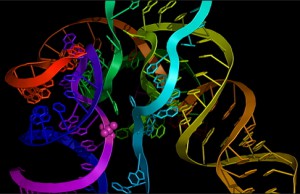Commonly, the word “Biomarker” is mainly used for the geological literature before it is used in the biomedical field, and it has ever been translated into “ Biomarker Compounds”, referring to some organic compounds in geological materials from living organisms. In the 1960s, the term began to appear in the medical literature, and in the eighties of last century it was officially introduced to the biomedical field.

Coverage of biomarker is so wide that its related research techniques are also varied. Almost all the technologies used in the research of nucleic acids ( such as adeno-associated virus epitope 2), proteins, carbohydrates and other biological macromolecules can also be used for biomarker studies.
Most nucleic acid markers, for example SNPs, CNVs, microRNAs and lncRNAs, can be detected by sequencing or gene chip technology; for protein and peptide biomarkers, technologies can be employed are mainly the Mass Spectrometry, HPLC (High Performance Liquid Chromatography), LC-MS, Two-Dimensional Gel Electrophoresis and protein chips. And as for metabolomics and sugar group biomarkers, some of these techniques mentioned before can still be available. Briefly, a common study for the techniques of biological markers is extremely necessary.
In order to drive the research, some important strategies for biomarkers are used, mainly divided into two categories: function-candidate policy ( based on certain assumptions or a theory ) and genomics policy ( based on the data rather than certain assumptions ). The key elements of the former are based on modern known pathophysiological processes or functional molecules so that such strategy is able to detect variation and disease severity correlation. This strategy assumes the function could be connected with molecules, and inspects the molecules as a candidate, which can only find the biomarkers within a smaller range.
Genomics policy does not start from a specific gene or function. This strategy is able to connect a certain mode and its functional pathways together by analyzing large amounts of data generated in biological samples of different states. Such strategy can find the biomarkers in a wider range, but sometimes the results are more false positive, with poor reproducibility. Based on the fact, some researchers have suggested that both the two strategies should be used in combination.
Biomarker is a powerful tool for precise medical implement. It covers a spectrum of types and applications. Currently, high-throughput genomics technology has been widely used in modern research and development of biological markers. Application of high-throughput biomarkers is faced with many challenges, but such research is still full of hope.